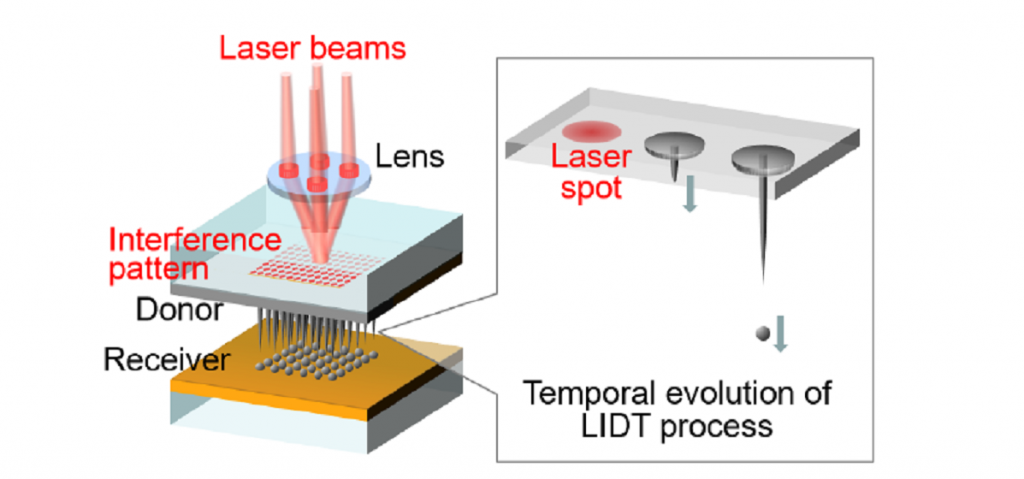- Laser-Induced Transfer of Noble Metal Nanodots with Femtosecond Laser-Interference Processing
- Yoshiki Nakata, Koji Tsubakimoto, Noriaki Miyanaga, Aiko Narazaki, Tatsuya Shoji, Yasuyuki Tsuboi
- Nanomaterials, 11 (2021), 305.
- DOI: 10.3390/nano11020305

Noble metal nanodots have been applied to plasmonic devices, catalysts, and highly sensitive detection in bioinstruments. We have been studying the fabrications of them through a laser-induced dot transfer (LIDT) technique, a type of laser-induced forward transfer (LIFT), in which nanodots several hundred nm in diameter are produced via a solid–liquid–solid (SLS) mechanism. In the previous study, an interference laser processing technique was applied to LIDT, and aligned Au nanodots were successfully deposited onto an acceptor substrate in a single shot of femtosecond laser irradiation. In the present experiment, Pt thin film was applied to this technique, and the deposited nanodots were measured by scanning electron microscopy (SEM) and compared with the Au nanodots. A typical nanodot had a roundness fr=0.98 and circularity fcirc=0.90. Compared to the previous experiment using Au thin film, the size distribution was more diffuse, and it was difficult to see the periodic alignment of the nanodots in the parameter range of this experiment. This method is promising as a method for producing large quantities of Pt particles with diameters of several hundred nm.
https://doi.org/10.3390/nano11020305